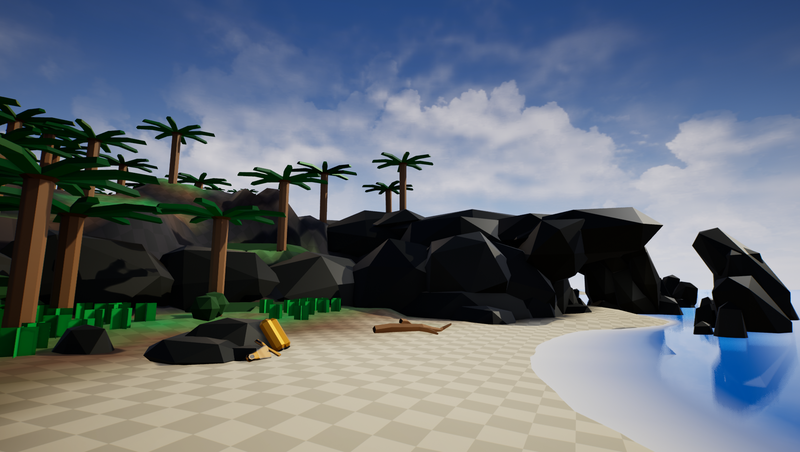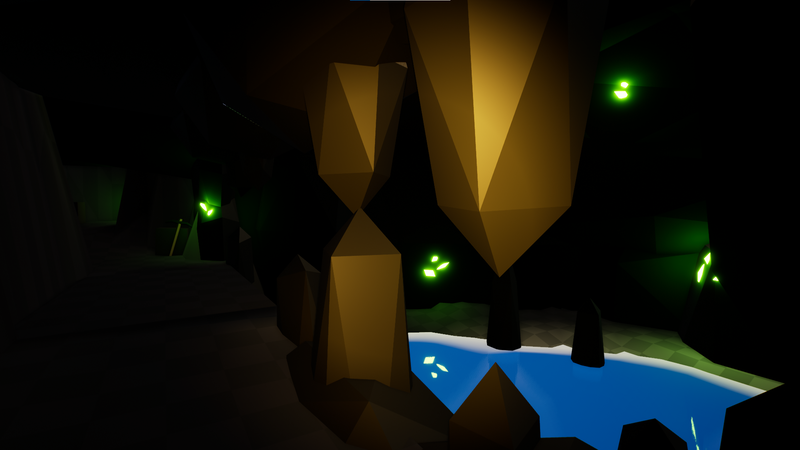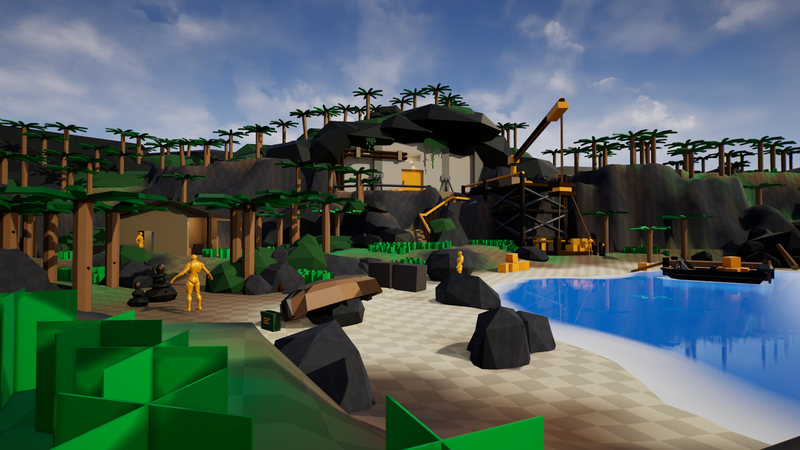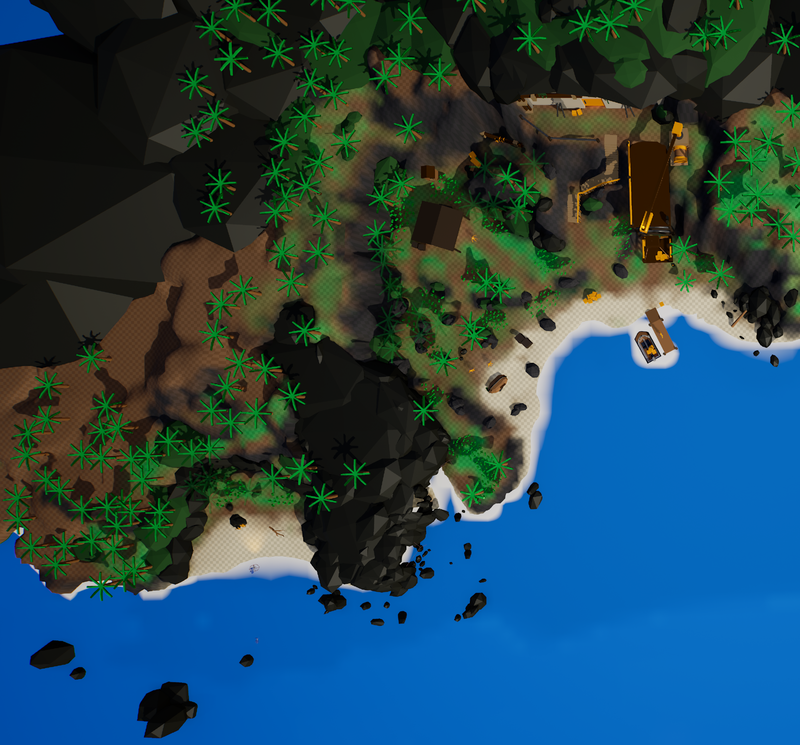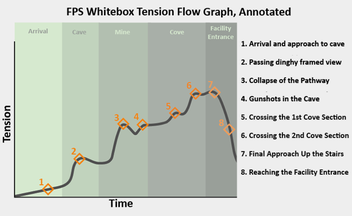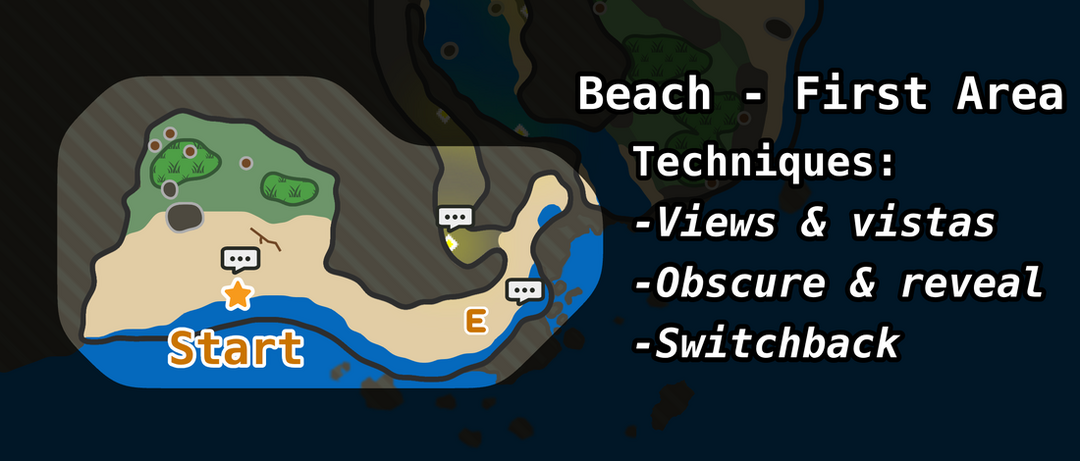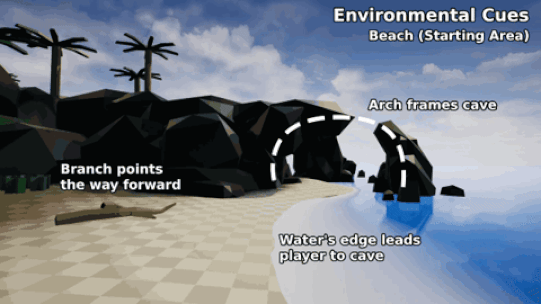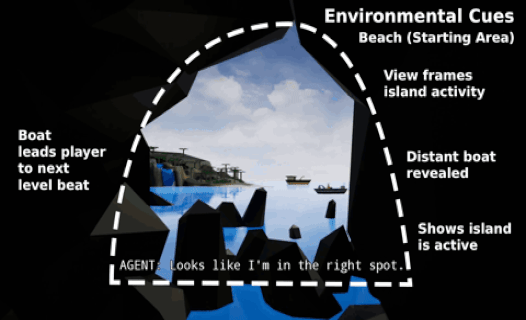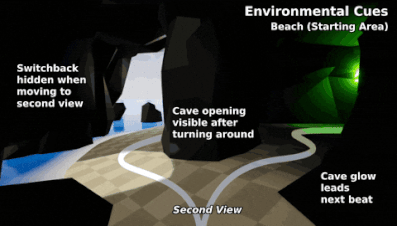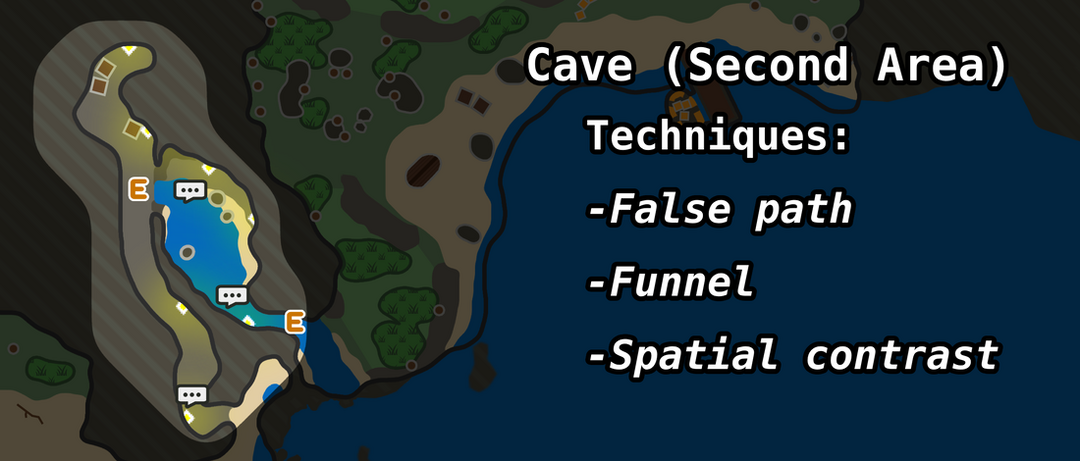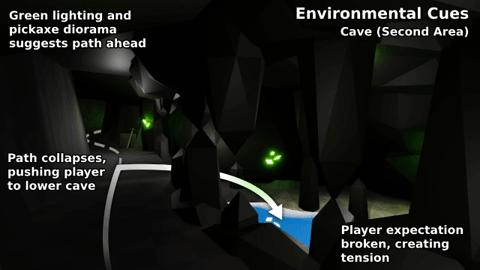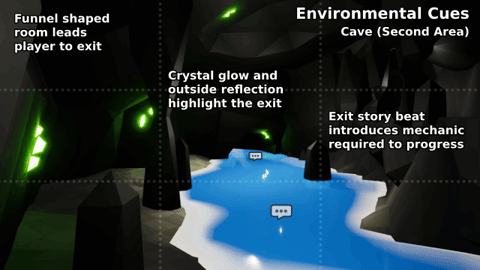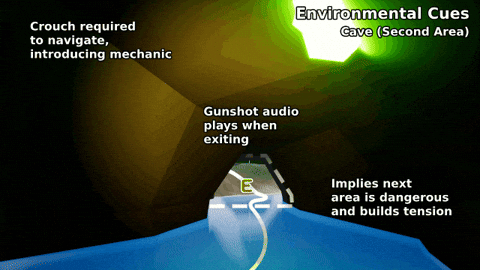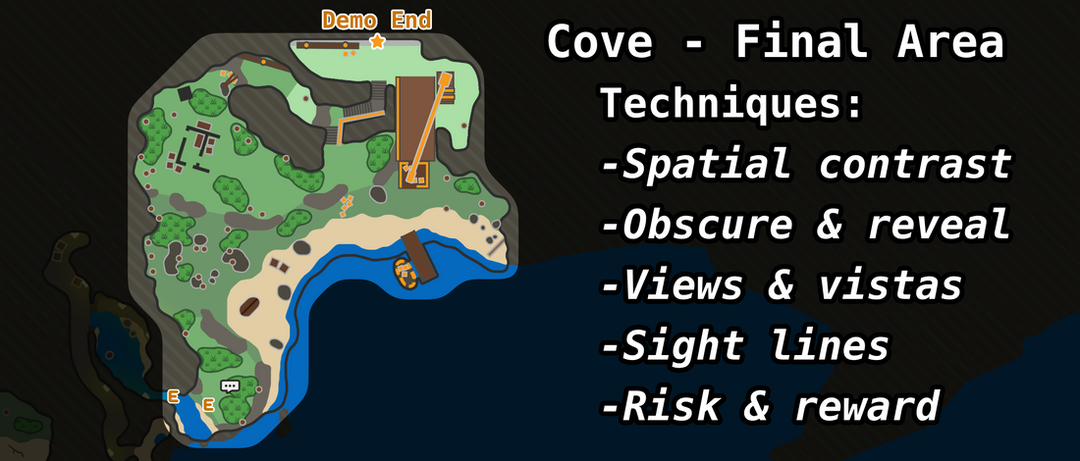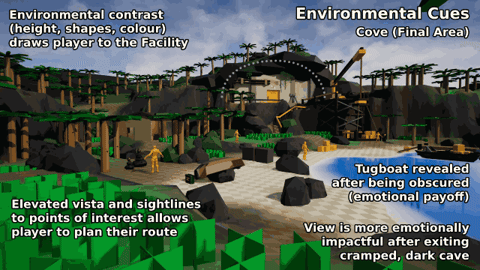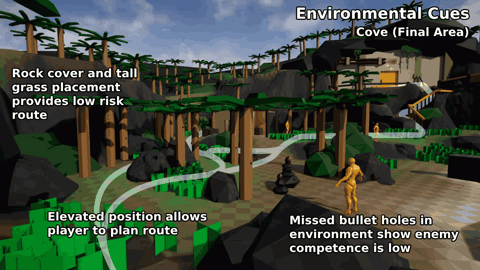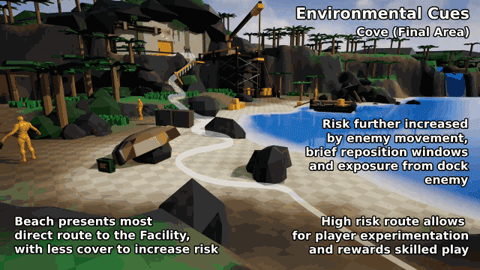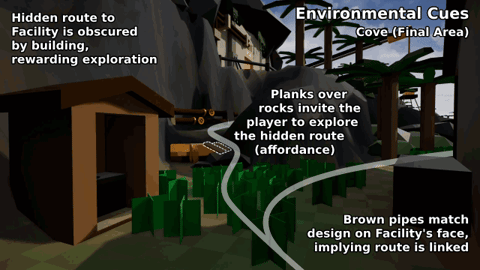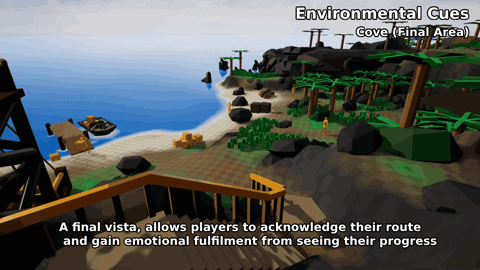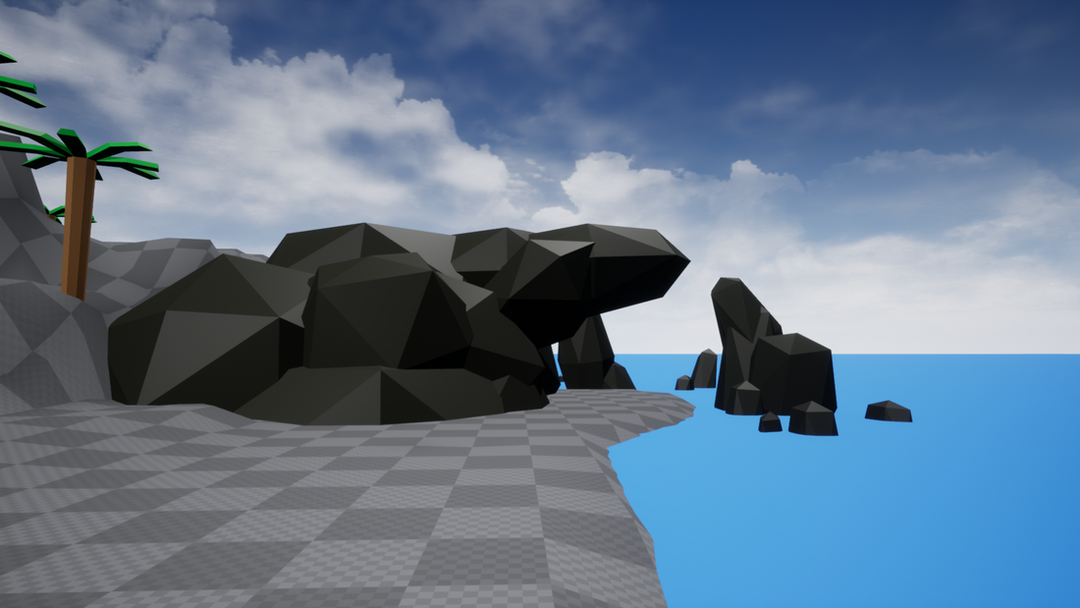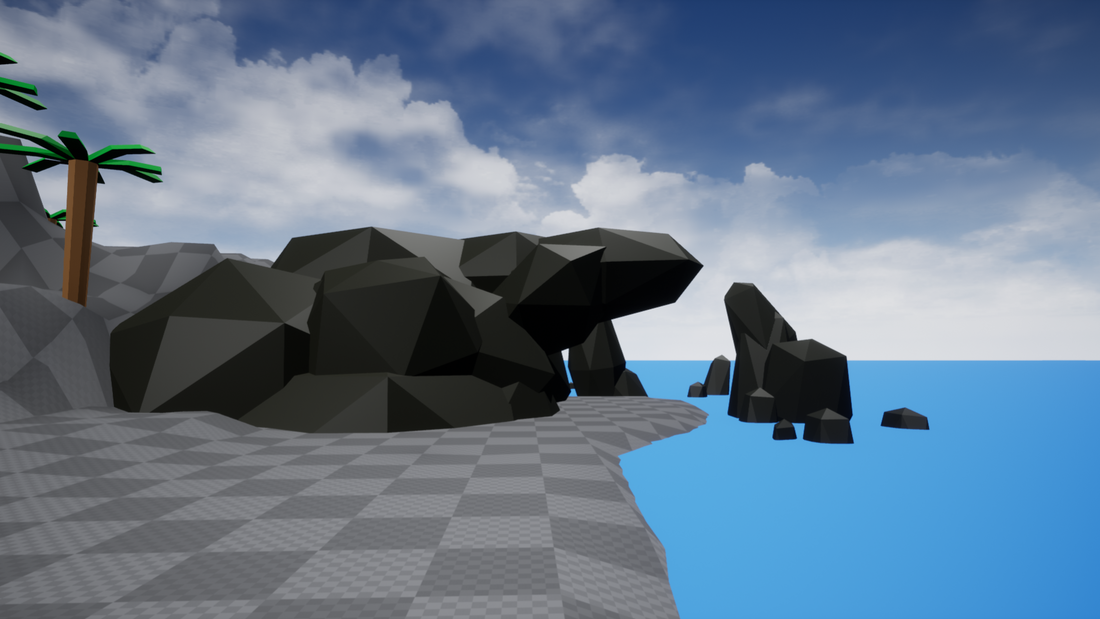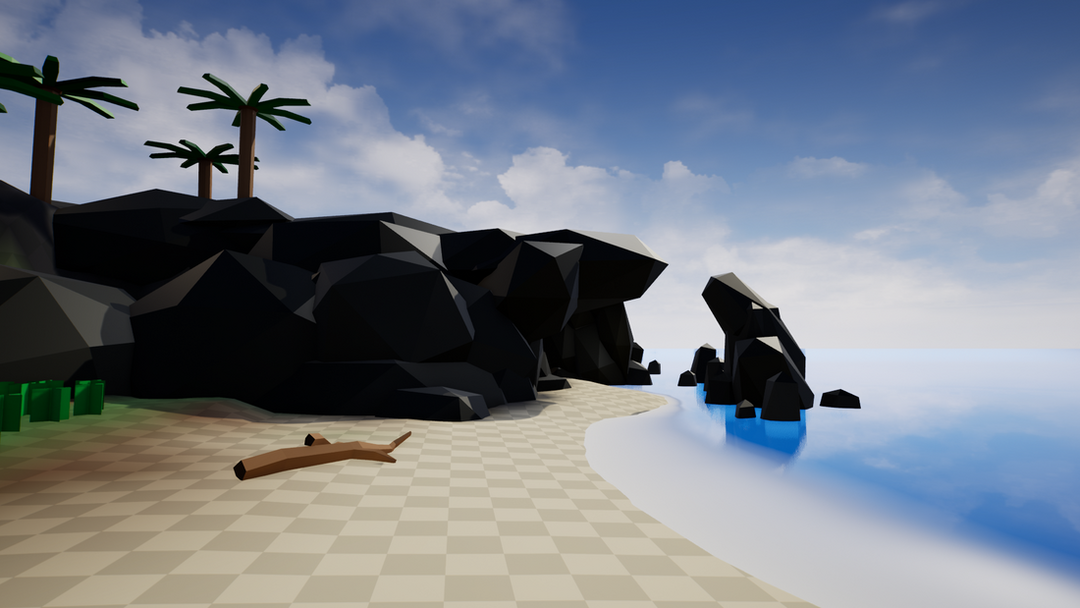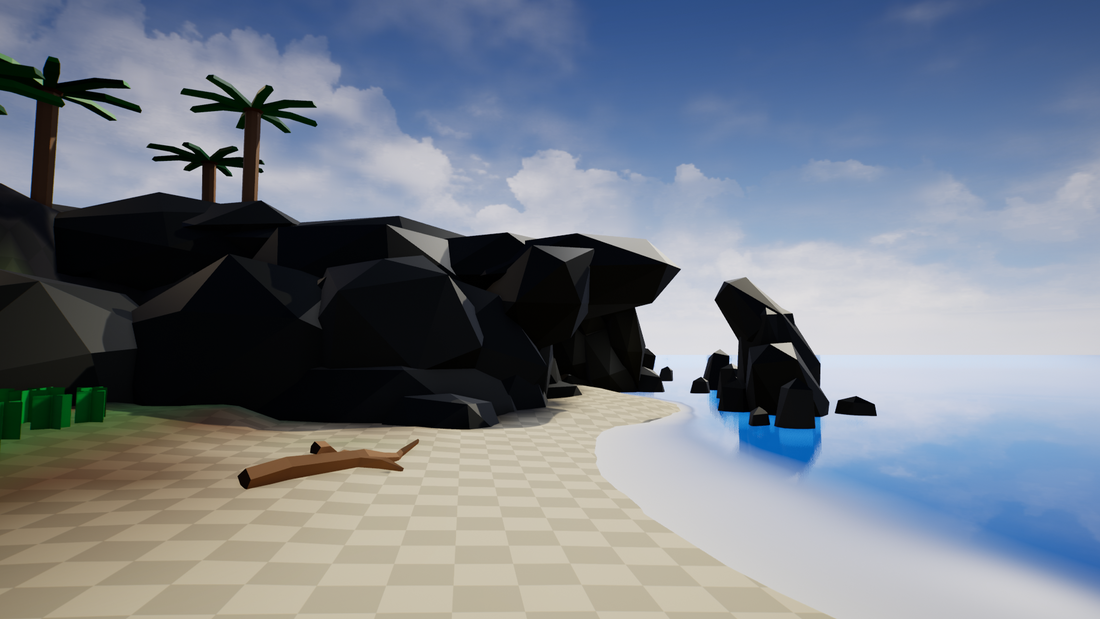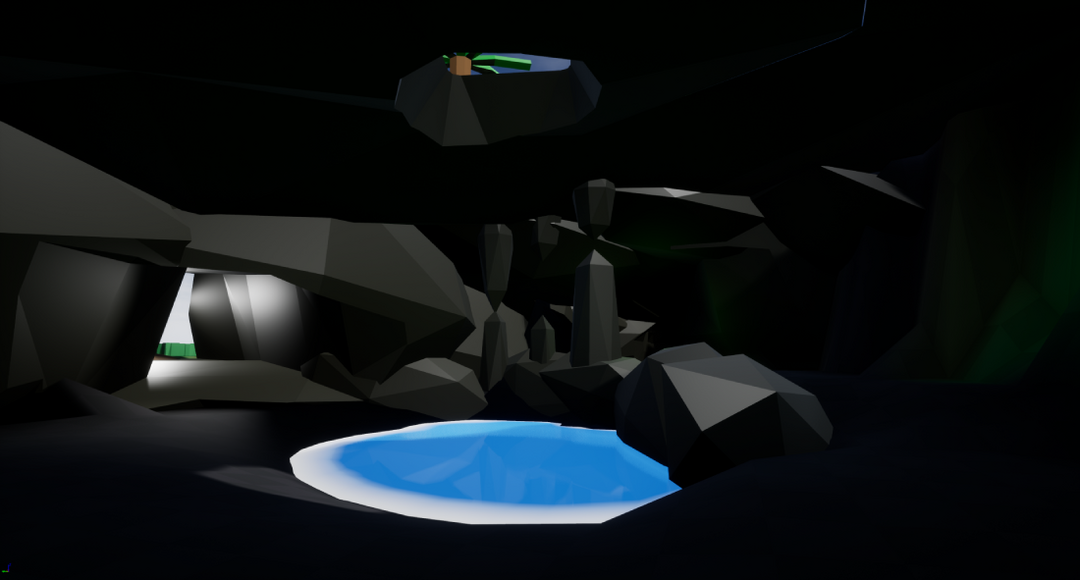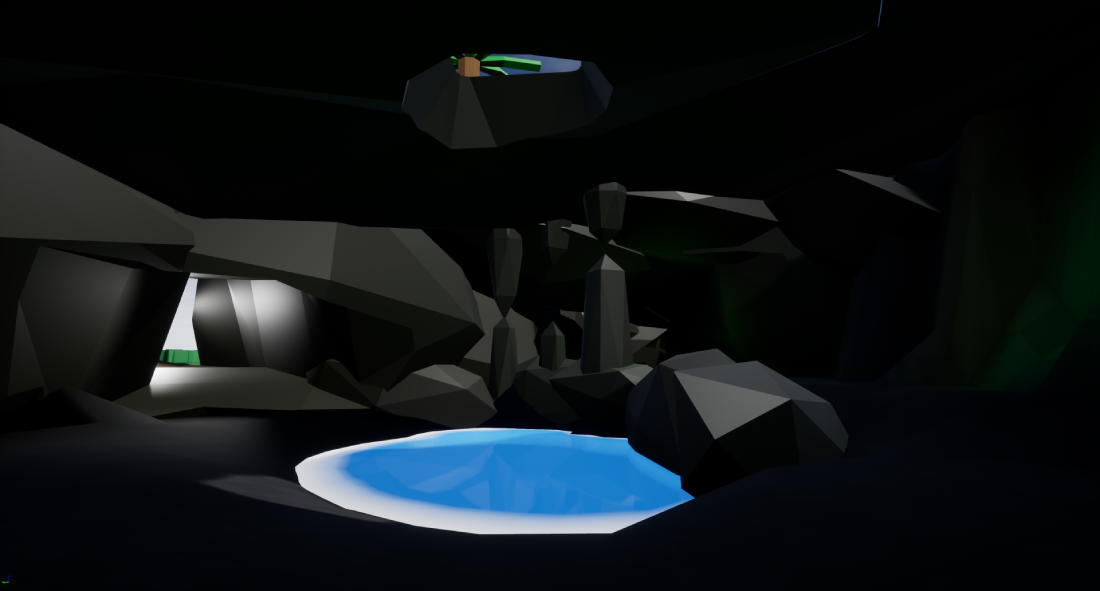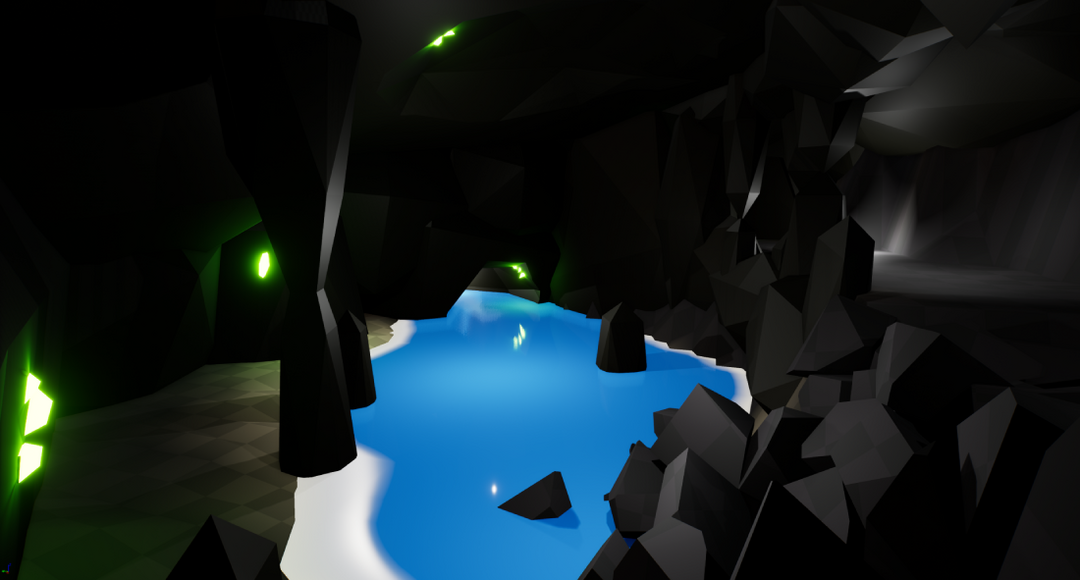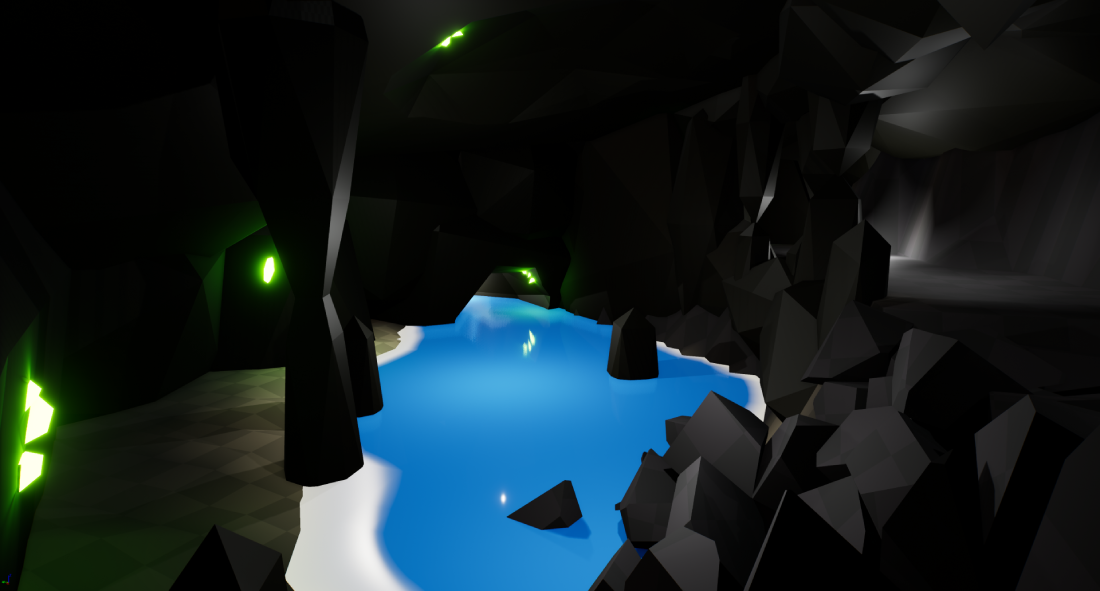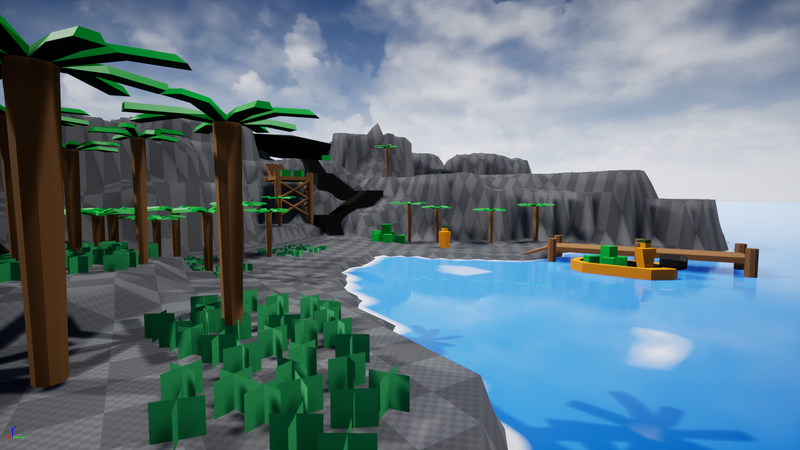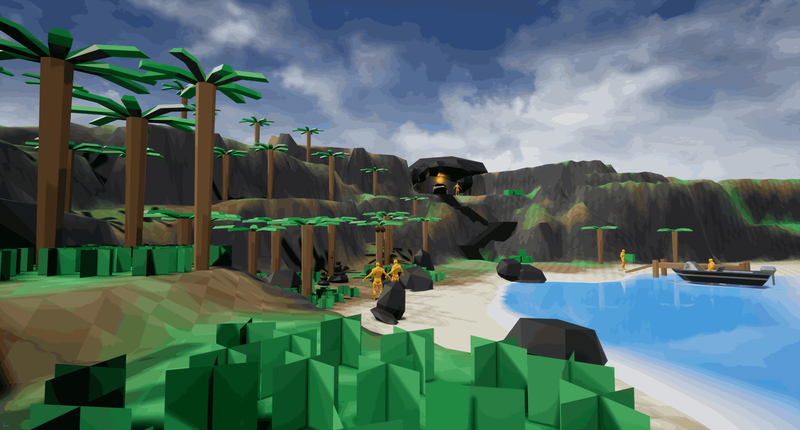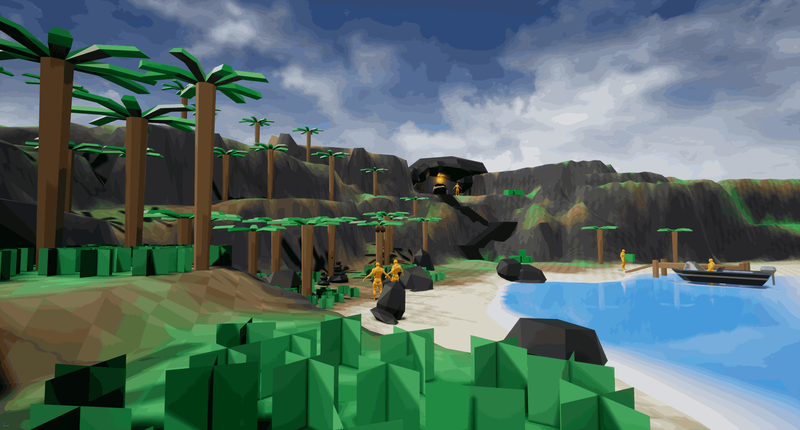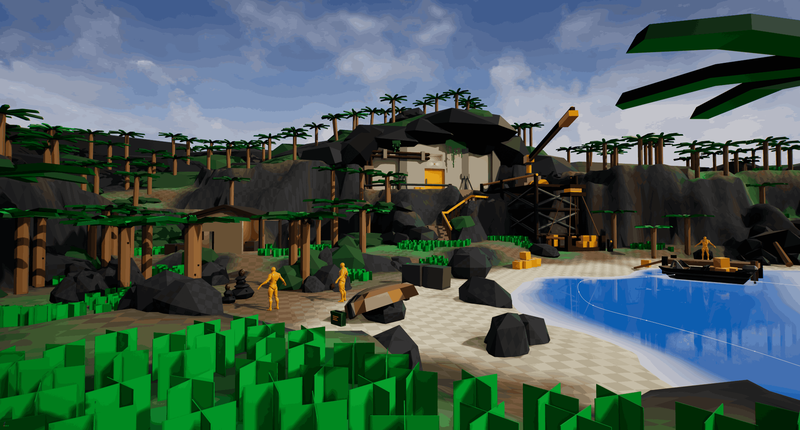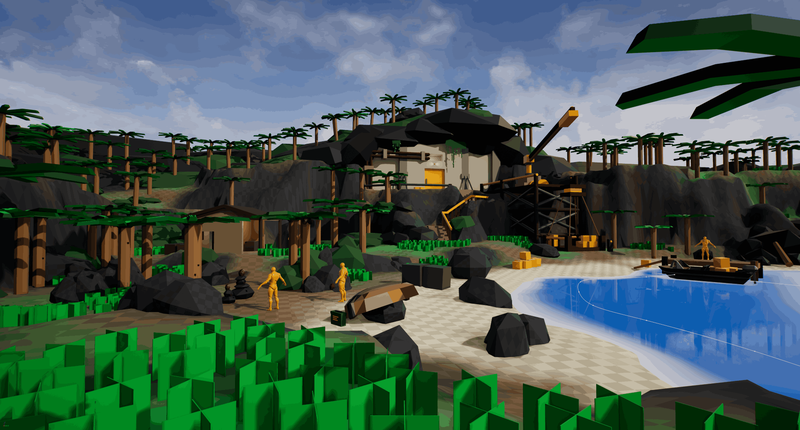Jordan Cordina
Level Designer
The Facility
Players: Singleplayer
Platform: PC
Status: Released prototype
Contributions
Team Size: Solo
Using: Unreal Engine 4
Duration: 3 months
👉Responsibilities
- Sole designer from concept to final blockout
- Utilised visual scripting for events and story beats
- Applied architectural techniques and psychology to the level geometry to guide players
- Iterated and evolved level over seven stages based on player feedback
Gameplay Summary
- The Facility concept was a first-person stealth-action game, with a low-tech 60's spy films theme
- Level is linear and low-action, featuring multiple stealth routes
- The player starts without equipment, forcing them to rely on stealth
- The mission is to covertly infiltrate 'The Facility', using tall grass to stay hidden
🎯Design Goals
- Encouraging player movement solely through environmental cues
- Creating a sense of mystery as players unravel the Facility's purpose
- Building tension to enhance the danger and make payoffs feel great
- Introducing the crouching and stealth mechanic to players
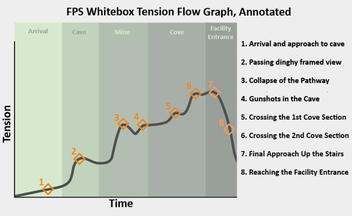
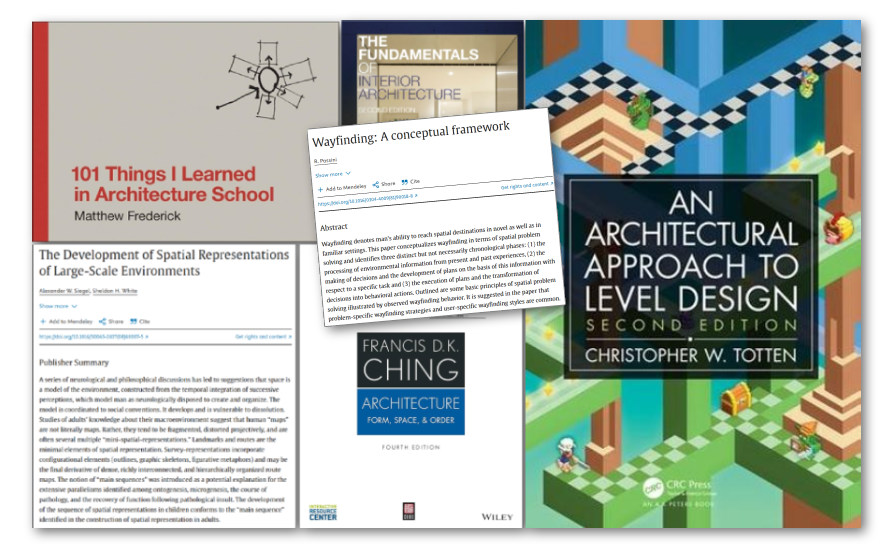
Above: Some of the wayfinding, architecture and Level Design sources I had researched
✨Personal Development Goals
My personal development goals for the project were:
- Creating a 7-10 minute blockout to practice flow and pacing technique
- Putting into practice research into how wayfinding psychology and architectural techniques can guide movement without UI (see image)
- Learning basic visual scripting to assist with visualising flow
- Gaining familiarity with Unreal's landscape and foliage tools
🔍Level Overview
- Level features exploration and stealth sections
- Story beats and scripted events feature heavily in the first half
- Architectural techniques used to increase impact of level beats
- Stealth section features risk and rewards routes
🏖️The Beach - Technique Breakdown
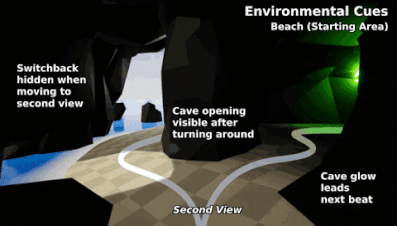
☢️The Cave - Technique Breakdown
🏝️The Cove - Technique Breakdown
🔄Iterations
🏖️Beach
Final beach: Driftwood points player towards cave • raised sand in cave hints that path continues inside
☢️Cave
Final cave: Collapsing path blocks backtracking • environment gives narrative hints • exit tunnel teaches crouch
🏝️Cove
Mid cove: Linear route • emphasised firing range • facility not clear enough • raised ground obstructed view
Final cove: Multiple points of interest • POIs emphasised • clear silhouette and contrast for factory • multiple routes
🪞Reflections
📝Were design goals met?
- Player movement encouraged via environmental guideposts
- Lighting and level geometry successfully guided players in playtests
- Iteration and playtesting helped refine layout
✅ Building tension and creating payoff moments
- Tension built through scripted events and audio
- Payoff achieved by obscuring + revealing views
- High risk, high reward stealth route available
- Sense of mystery created through environmental cues
- Scripted enemy text hints at a darker purpose
✅ Introducing the stealth mechanic
- Engagement with crouching required to progress
- Crouch segment preceeds stealth section
- Players could plan their route from the first vista
- Low-risk route features hard cover
- High-risk route dead ahead, promoting level reset
- Exploration is rewarded with a hidden route
🏆Successes
Deep-diving architectural techniques while iterating on the Facility's design set me up for success, as this is what players felt I got right. These techniques built a sense of mystery, discovery and grandeur, and I found the more I leaned into them, the more effortless and fun player navigation became. Setting up scripted events - which I'd not used as extensively before - also proved rewarding, making the blockout's flow easier to visualise.
📍Pain Points and Improvements
After improving navigation, players said the level's beats came too quickly. By slightly extending the cave section, foreshadowing the path collapse and breaking it up with a choice of routes, tension would have room to rise naturally. This could improve pacing and payoff, giving players more room to breathe.
In the cove, some players didn't see the building as a point of interest from the first vista. I'd adjust the trees around it to improve visibility, and would ground it with some grass in front of the wall.
Additonal scripting would also improve balancing stealth routes - the enemies move on a set path without a 'detection' mechanism, which I'd add in future stealth projects to get timings just right.
✨Key Takeaways
- Rapid iteration and quick feedback early on is key
- Intuitive navigation frees the player to focus on the fun
- Architecture and level design theory shapes space with purpose
- Scripted events improve visualisation and should be used often
- Incorporate scale from the start, and plan pacing with metrics in mind
